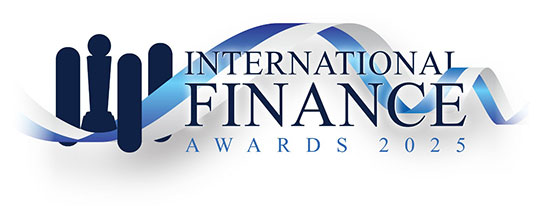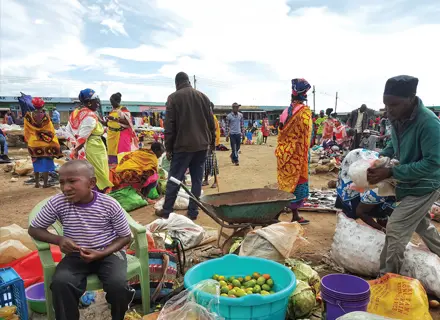Kenya has been in the news these days, albeit for the wrong reasons. Demonstrations against planned tax increases by President William Ruto got out of hand. Protesters stormed Kenya’s Parliament, forcing Ruto to withdraw a tax bill supported by an International Monetary Fund (IMF) team. The protesters also accused the Kenyan President of imposing a “colonial” agenda on the African country’s population.
Kenyans are demanding more accountability from the Ruto government, despite the latter agreeing to withdraw his tax reforms. These were intended to help reduce the African country’s large debts but protesters insisted the government should first cut spending, saying there was too much waste. Ruto has already announced several austerity measures, including a freeze in proposed pay rises for the Parliament. However, the protesters are determined to see Ruto go.
Tracing the reason
During his 2022 presidential election campaign, Ruto promised to improve living conditions for low earners by tackling corruption within Kenya’s institutions, reducing government waste, and eliminating the country’s $82 billion debt.
“However, Ruto’s detractors say he has not delivered on those claims. What have irked many in particular, they say, are the frequent hikes in taxes with no corresponding improvements in social amenities. Already, a 2023 law doubled taxes on fuel, and the initial draft of this year’s finance bill was set to further raise that fuel tax,” Aljazeera reported.
The value of the shilling has dropped by 22% against the US dollar since 2022, causing prices to soar, while incomes have largely stayed the same. Ruto initially justified the tax increases, saying they were necessary for Kenya’s debts. His government took office amid a punishing drought in 2022 and after the Russia-Ukraine war disrupted food imports.
However, critics have long said massive waste in public spending could offset the debts. In April 2024, the IMF said there was a significant shortfall in tax collection that would keep Kenya’s domestic borrowing needs up, although it also stressed the need to cut government waste.
Ruto’s now-withdrawn tax hikes as well as similar legislation passed in 2023 are both linked to IMF loans as Kenya staggers under the weight of a heavy debt crisis. When he entered the President’s office in August 2022, Kenya was already in a crisis. Its external debt was about $62 billion, or 67% of its GDP.
Former President Uhuru Kenyatta had borrowed heavily from commercial lenders and countries like China to finance huge infrastructure projects, including a rail line that links Nairobi to the port city of Mombasa and 11,000km (nearly 7,000 miles) of tarmacked roads. Most of those loans were commercial, meaning they had high interest rates. Meanwhile, the infrastructure efforts failed to generate the expected revenue.
COVID-related disruptions and the inflation pressures also weighed heavily upon the African country. Added to that were the supply chain disruptions in agriculture in Kenya that followed Russia’s invasion of Ukraine. All these combined meant food and the general cost of living were soaring in 2022 and so were Kenya’s debts as interests accumulated.
As of July 2024, the nation’s debt has reached $82 billion, including domestic borrowing. More than half of government revenue goes towards debt repayments. In April 2021, Kenya under Kenyatta and then-Vice President Ruto entered into an agreement with the IMF for relief.
The package came in the form of a 38-month programme the international lender said would help Kenya manage its debt and create a conducive economic environment for needed private-sector investment. Under the programmes, Kenya is set to unlock $3.9 billion in funding. A separate climate fund was also approved at $542 million.
Can IMF be blamed here?
The IMF conditioned the loans on hiking taxes, reducing subsidies and cutting government waste, measures it said would increase government revenue while reducing spending. Those measures kicked off in 2023. Ruto since 2022 has made the IMF relief programme a priority, as disbursements under the programme come based on periodic reviews of how well the government has pushed through some of the reforms. The last review in January unlocked $941 million.
After taking over the country’s reign, Ruto suspended subsidies on fuel and fertilisers as part of the programme. Fuel subsidies were reinstated in 2023 after protests broke out. The Finance Bill 2023 was also backed by the IMF. The bill, which passed in June 2023, introduced a 2.5% housing levy for employed people and raised the VAT on fuel from 8% to 16%.
The now-withdrawn Finance Bill 2024 with its tax hikes was backed by the IMF. It was set to generate $2.7 billion to fund a budget deficit and fund development programmes. Analysts said Kenya still needs to fill that gap to meet some targets under the IMF programme.
The IMF loans helped Kenya avoid defaulting on a $2 billion Eurobond that matured in June 2024. The country does not have any pressing repayments in the short term.
As per Martin Muhleisen, a non-resident senior fellow at the Atlantic Council’s GeoEconomics Centre and a former IMF official, Kenya’s decline into fiscal trouble has been entirely predictable, “led by the ambitions of past leaders who followed the path of easy money.”
“During the mid-2010s, under President Uhuru Kenyatta, Kenya was looking for ways to leverage its frontier market status into higher growth via debt-financed investments and infrastructure projects. As a result, within a decade, Kenya’s public debt ratio almost doubled from 41% of gross domestic product (GDP) in 2014 to a projected 78% of GDP in 2024,” Martin remarked.
One prominent creditor has been China’s Export-Import Bank, which provided Kenya with $3.2 billion to build a Standard Gauge Railway (SGR) between Nairobi and the port of Mombasa—a project that has been criticised because of its weak governance and high cost but, as per the recent reports, will be extended to Kenya’s western border with Uganda.
“Although public investment does have an important role in raising a country’s economic fortunes, Kenyans are still waiting to see the social returns of the debt-financed investment spree. GDP growth has hovered around 5% since the mid-2000s, real GDP per capita has stagnated in recent years, and the poverty rate (at just below 40%) remains above pre-COVID-19 levels. It is no wonder that the fiscal belt-tightening now required to arrest a further run-up of public debt has met with resistance, amid legitimate questions about who benefited from the loans that ordinary Kenyans now have to repay,” Martin added.
However, the former IMF official also mentioned that after turning to the IMF, Ruto’s administration was doing reasonably well, in terms of predicting a steady pace of fiscal adjustment (at about 1% point of GDP per year over five years) and allowing for measures to absorb its social impact.
Both the primary fiscal deficit and the trade balance improved, and the shilling unwound much of its decline against the dollar as Kenya surprised markets by repaying a two-billion-dollar Eurobond in June 2024. Moreover, the IMF programme unlocked a considerable amount of concessional multilateral financing, including from the World Bank.
“But the country remains in a financial hole from which it will be very difficult to climb out. One problem is that higher interest rates keep adding to Kenya’s debt dynamics, as illustrated by the hefty 10% interest rate on a smaller Eurobond that Kenya issued in February to meet its June payment. Therefore, despite an improvement of the primary deficit broadly in line with programme targets, Kenya’s public debt is still projected to increase this year,” Martin commented.
Is there any way out?
With interest payments accounting for more than a quarter of total revenue, the Kenyan government may decide to seek a debt restructuring. As per Martin, this is not something the IMF could impose on Kenya, unless it judged that public debt was unsustainable.
However, the government went to great lengths in the past to service its debt and retain access to financial markets. It would have been cynical on the part of IMF shareholders to force Kenya into an unwanted debt operation, as long as there was still a realistic chance of avoiding it. This now looks less assured, and it may be the only avenue left for Ruto.
As per Martin, the IMF and other multilateral institutions have raised funds and mobilised special drawing rights (SDRs) to subsidise interest rates paid by poorer member countries, and Kenya is already benefiting from this effort. However, there are limits to this approach. Subsidies have to be either financed from donor countries’ budgets (with dwindling political support) or they are generated from richer countries’ SDR holdings.
“SDR-based lending works only to a limited extent. SDRs derive their value from their status as foreign exchange reserves and being exchangeable for dollars and other hard currencies held by central banks in wealthy countries. Any overuse or exposure to default risk (for example, from rising public debt in recipient countries) could compromise their reserve-asset status, which would impact both the IMF’s financing model and its capacity to lend to countries in distress,” he noted.
Could the IMF and World Bank provide larger loans? The two institutions regularly review the amounts that countries can access under various conditions. Ceilings have gone up over time, but shareholders require that larger loans come with stricter macroeconomic conditionality, an approach that would presumably have triggered a similar outcome for Kenya. Also, multilateral loans already account for more than a quarter of Kenya’s public debt.
Since these loans cannot be restructured, private creditors might be more hesitant to invest in the African country, because any future debt operation might need to be deeper than in similar countries with a smaller share of multilateral debt.
Going by Martin’s analysis, Kenya’s ongoing economic mess is largely homemade, albeit with help from willing external lenders. The COVID crisis exacerbated a lack of fiscal discipline, eventually forcing the country to adopt a stabilisation programme.
“While meeting with some initial success, recent events have made it clear that the government’s adjustment strategy needs to change, putting a possible debt operation on the table. The IMF did its best to support an initially credible effort by the government, but it must also ask itself what could have been done to prevent the sharp increase in public debt that is at the heart of Kenya’s problems today,” he concluded.

